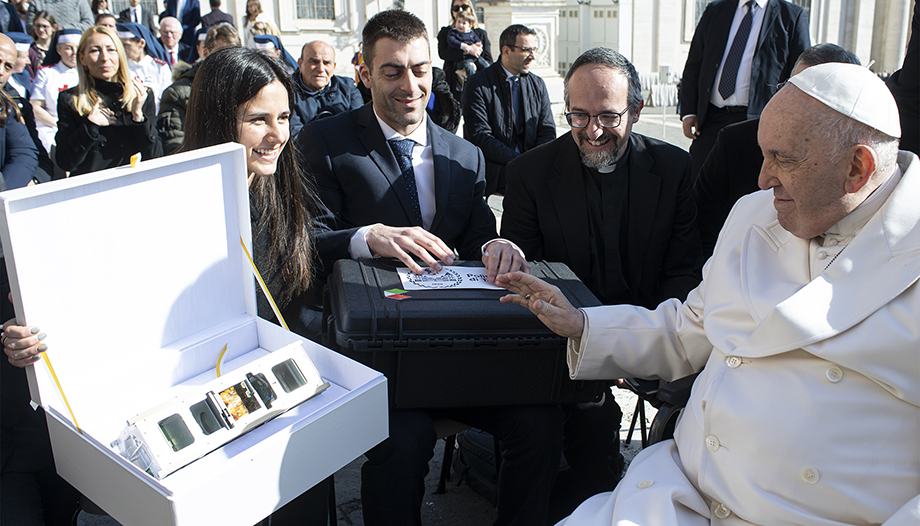At 11:19 p.m. on the night of Monday, June 12 to Tuesday, June 13 - reports vaticanews.va - the satellite carrying the nanolibro with the words of hope that Francis pronounced in St. Peter's Square on March 27, 2020, at the height of the pandemic, departed from the Californian base of Vandenberg.
Once in orbit, the Cubesat built by the Politecnico di Torino will transmit some of the Pope's messages of hope, which can be picked up by radio amateurs around the world. The initiative is promoted by the Dicastery for Communication.
160 pages compressed into a nano-book the size of the tip of a pin. The first satellite of the Vatican, Spei SatellesThe hope, the hope, goes into orbit: headlines in national and international newspapers.
A message of hope, in line with the document against weapons and for peace signed on Saturday by 30 Nobel Laureates (including Giorgio Parisi) during a meeting organized by the Holy See in St. Peter's Square. Objective of this document condemning all conflicts, one billion signatures.
While the Cardinal Zuppi tries to negotiate a truce in the Russian war in Ukraine, the Vatican puts all its moral authority in the balance.
SpeiSat, the size of a shoebox and weighing two kilograms, was built in three months by a team of young researchers at the Politecnico di Torino led by Sabrina Corpino, a professor in the Department of Aerospace Engineering.
Two main tasks: to fly Pope Francis' book "Why are you afraid? Do you still not have faith?" (Piemme Edizioni, 14 euros) and to transmit pontifical messages every two minutes that all radio amateurs around the world will be able to pick up on frequency 437.5 MH.
Although spread out on a plan, its 160 pages occupy nine square meters, the nanobook is barely visible to the naked eye and weighs less than a gram, so much so that, when handled under the vacuum system of the clean room in a basement of the Polytechnic, the researchers were "afraid to inhale it". The chip, about the size of a third of a fingernail, contains 222,655 characters of text.
The orbit -which SpeiSat will complete every 90 minutes - is a geosynchronous polar orbit inclined 97.6 degrees above the equator at 550 kilometers above the Earth's surface.
Of the 90 minutes, 60 will be exposed to the Sun (to power triple-layer photovoltaic cells with an efficiency of 27%, supplied by Cesi) and 30 in the shadow of the Earth.
Mission success
In addition to the religious mission, the satellite carries on board two experiments, one to measure the Earth's magnetic field with magnetometers on three axes, and the other on the thermal control of the satellite by means of temperature sensors that will send data to the control room installed at the Polytechnic.
Upon reaching orbit at 550 kilometers, the Falcon will release the parent satellite ION, a multi-satellite container operated by Italy's D-Orbit.
ION will hatch a couple of weeks later. Only then will it be possible to say that SpeiSat, which was blessed in Rome by Pope Francis on the eve of his first recent hospitalization, has achieved its goal.
The SpeiSat operation, supported by the Italian Space Agency (Asi) and the CNR, under the direction of the Dicastery for Communication of the Holy See, was mediated by Don Luca Peyron, a graduate in Law and Pastoral Theology, founder of the Service for the Digital Apostolate, an astrophile with a telescope on the roof of his parish in Turin.









